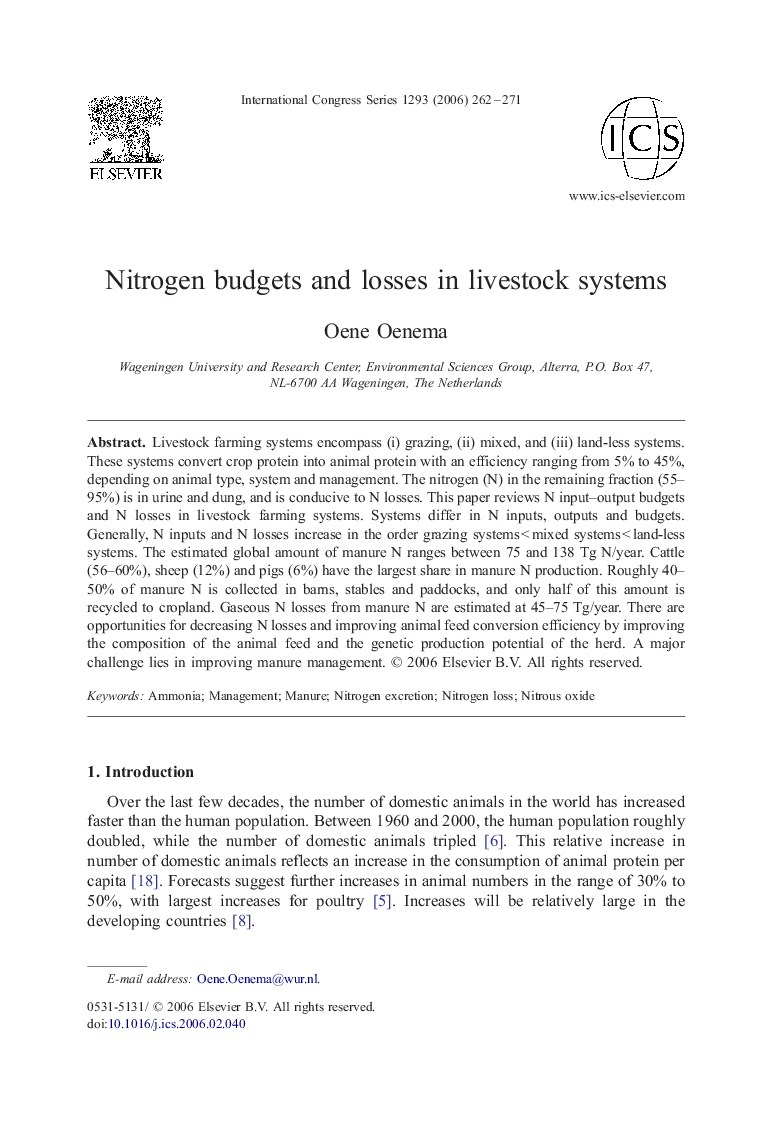| Article ID | Journal | Published Year | Pages | File Type |
|---|---|---|---|---|
| 2577094 | International Congress Series | 2006 | 10 Pages |
Livestock farming systems encompass (i) grazing, (ii) mixed, and (iii) land-less systems. These systems convert crop protein into animal protein with an efficiency ranging from 5% to 45%, depending on animal type, system and management. The nitrogen (N) in the remaining fraction (55–95%) is in urine and dung, and is conducive to N losses. This paper reviews N input–output budgets and N losses in livestock farming systems. Systems differ in N inputs, outputs and budgets. Generally, N inputs and N losses increase in the order grazing systems < mixed systems < land-less systems. The estimated global amount of manure N ranges between 75 and 138 Tg N/year. Cattle (56–60%), sheep (12%) and pigs (6%) have the largest share in manure N production. Roughly 40–50% of manure N is collected in barns, stables and paddocks, and only half of this amount is recycled to cropland. Gaseous N losses from manure N are estimated at 45–75 Tg/year. There are opportunities for decreasing N losses and improving animal feed conversion efficiency by improving the composition of the animal feed and the genetic production potential of the herd. A major challenge lies in improving manure management.
